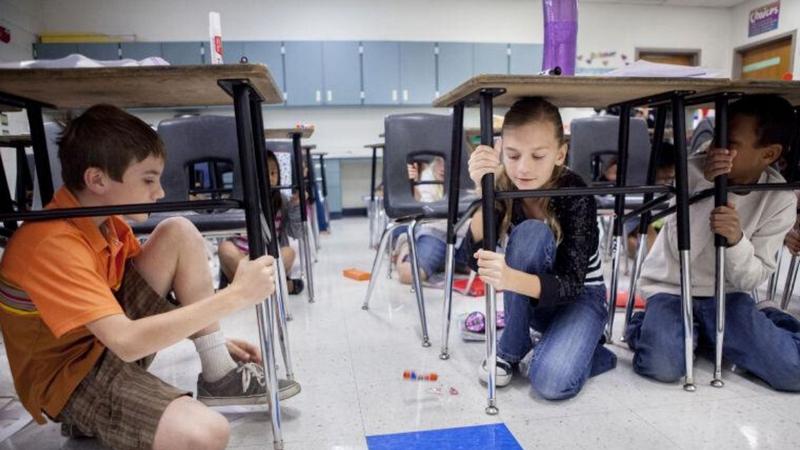Earthquakes, one of the most devastating natural disasters, can cause enormous damage in a matter of seconds. With the unpredictable nature of these phenomena, it is crucial that individuals and communities are prepared to act quickly and effectively.
This article provides an overview of how to protect yourself against earthquakes, covering preventive measures, proper behavior during the event, and correct actions to take after an earthquake.
From fortifying homes to creating emergency kits and family reunion plans, we’ll discuss the various strategies you can implement to improve your safety and resilience in the face of an earthquake. Let’s go!
How to protect against earthquakes
Earthquake protection involves preventive and correct measures during and after the event. Here are some suggestions:
- Pre-earthquake preparation:
- Strengthen your home: If possible, hire a professional to verify that your home is earthquake safe. This can include reinforcing walls, foundations, and securing large cabinets, shelves, heating appliances, and other large items to the wall.
- Prepare an emergency kit: This should include water, food, medicine, first aid items, a flashlight, a battery operated radio, and pet supplies if needed. Make sure everyone in the house knows where this kit is.
- Plan a meeting place: In the event of an earthquake, communication can be disrupted, so it is important to have a designated meeting place where all family members should meet.
- During the earthquake:
- “Duck down, covered up and held on”: This is the advice given by most security agencies. Crouch under a table or other sturdy piece of furniture, cover your head and neck to protect them from falling debris, and hold on to the furniture until the shaking stops.
- After the earthquake:
- Check for Injuries: Take care of yourself first, then help others. If someone is seriously injured, seek medical help immediately.
- Stay away from damaged buildings: They can collapse due to aftershocks.
- Be prepared for aftershocks: Smaller earthquakes, called aftershocks, can occur after the main earthquake.
Remember, preparation is the key to survival in any natural disaster.
Read too:
– Applications to detect earthquakes: learn about the best options available
– Maternity Assistance: What it is, Who is entitled, Amount, How to receive it
causes of earthquakes
Earthquakes are mainly caused by the release of energy accumulated inside the Earth. This energy is released in the form of seismic waves that make the earth shake. Here is a more detailed explanation:
- Plate Tectonics: The Earth’s crust is divided into several large tectonic plates that float on top of the mantle, the layer of semi-fluid rock below the crust. These plates are always moving, albeit very slowly – about a few centimeters per year.
- Tension Buildup: As these plates move, they can collide with each other (convergent), pull apart (divergent), or slide sideways (transformant). When two plates collide or slide against each other, stress builds up over time in the fault zones, which are the areas where the plates meet.
- Energy Release: Eventually, the accumulated stress becomes so great that the rock that makes up the plates breaks or slides, releasing the accumulated energy in the form of seismic waves. These waves travel through the Earth, causing the ground to shake and causing an earthquake.
- Aftershocks: Following the main earthquake (also called a major earthquake), smaller earthquakes known as aftershocks may occur. Aftershocks are the result of additional energy release or adjustments in the earth’s crust after the main earthquake.
It is noteworthy that most earthquakes occur along the edges of tectonic plates, but they can also occur inside the plates, although this is less common.
How long does an earthquake last?
The duration of an earthquake can vary greatly depending on its magnitude, depth and the geology of the region. In general, the tremor you feel from an earthquake—the period during which the ground actually shakes—usually lasts from a few seconds to several minutes.

However, it is important to remember that the actual duration may not be the main concern during an earthquake. Aftershocks, which are aftershocks that occur after the main earthquake, can occur minutes, hours, days or even months after the main event. Although aftershocks are generally less intense than the main earthquake, they can still cause additional damage to structures already weakened by the main earthquake.
Furthermore, while the actual tremor may only last for a short period of time, the effects of an earthquake – such as damage to infrastructure, landslides, tsunamis and loss of basic services – can last long after the tremor has ended.
How are earthquakes measured?
Earthquakes are measured using a variety of instruments and scales. Here are the most common ones:
- Seismographs: These are the instruments that detect and record the seismic waves produced by an earthquake. They produce a record called a seismogram.
- Richter Scale: Developed in the 1930s by seismologist Charles F. Richter, this scale measures the magnitude of an earthquake, or the total amount of energy released. It is a logarithmic scale, which means that each increase of one point on the scale represents a 10 times greater release of energy. For example, a magnitude 5 earthquake releases 10 times more energy than a magnitude 4 earthquake.
- Moment Magnitude Scale (Mw): This scale is currently the most used by seismologists to measure larger earthquakes, as it is more accurate for large-scale events than the Richter scale. It measures the total energy released by the earthquake.
- Modified Mercalli Intensity Scale (MM): Unlike the Richter and Mw scales, which measure the energy released by an earthquake, the MM scale measures the effects of an earthquake. It is a scale of 1 to 12 (I to XII) that describes the impact of an earthquake on people, structures and the earth’s surface.
It is worth remembering that no instrument or scale can predict when an earthquake will occur; they can only measure an earthquake after it happens.



